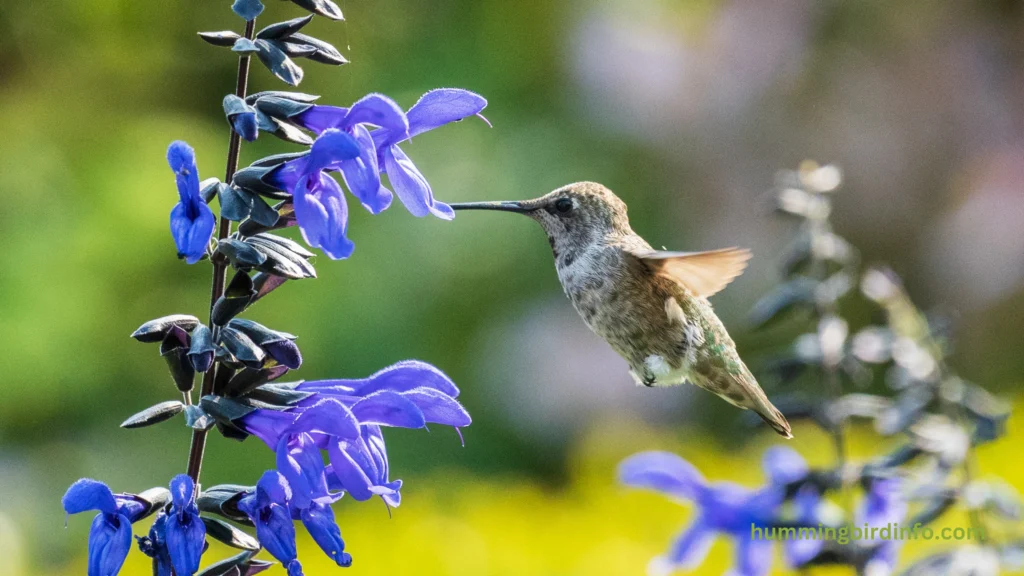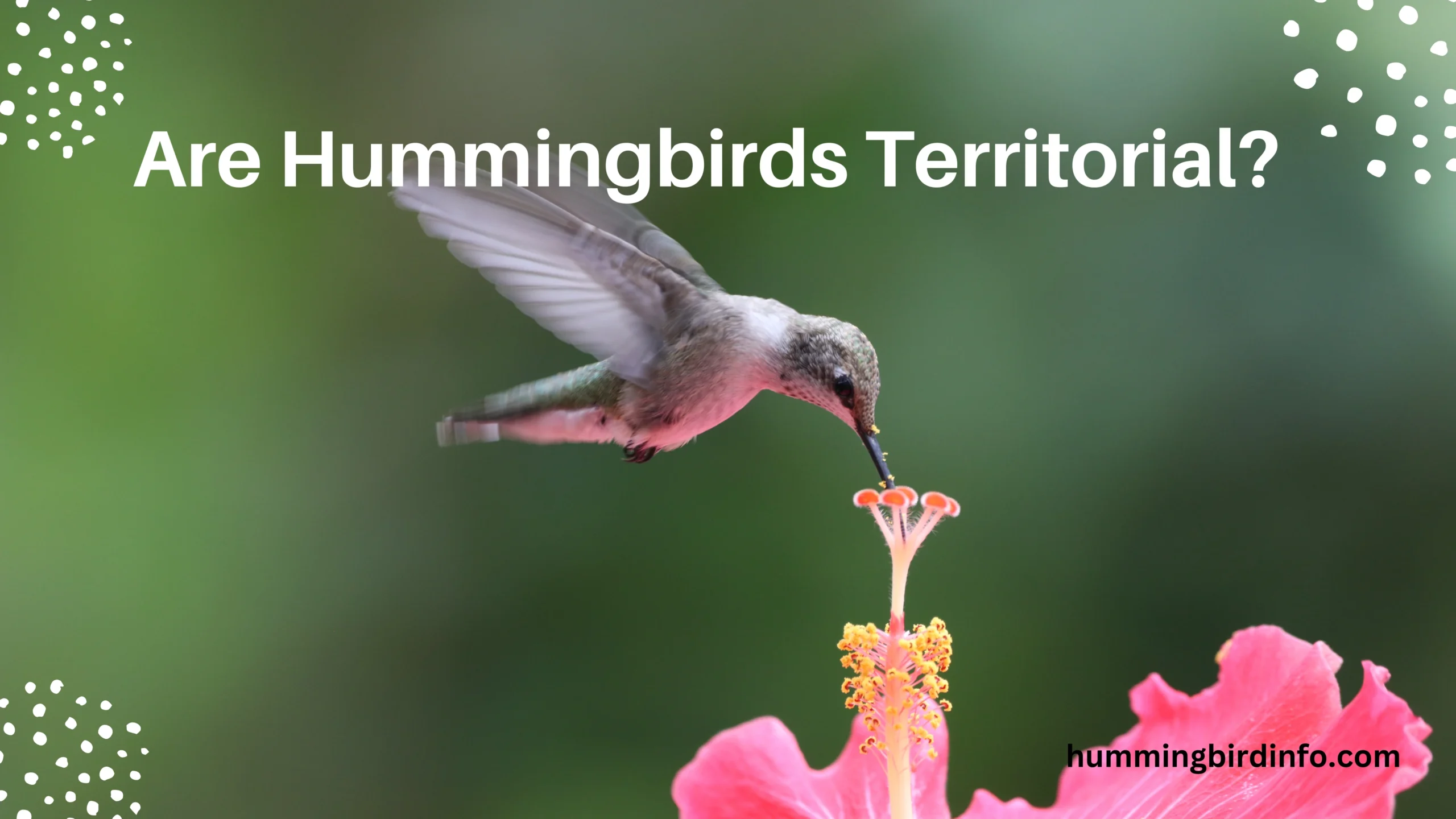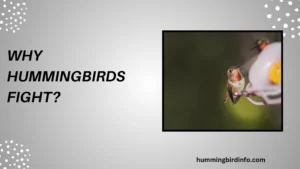They may be tiny and graceful, but hummingbirds are anything but passive. Their dazzling feathers and rapid, hovering flight might suggest a life of peace, but underneath that delicate exterior lies a fierce spirit.
These little birds are surprisingly aggressive, especially when it comes to defending what matters most — food, space, and mates.
In the wild, territoriality isn’t about being mean — it’s about survival. Animals fight for resources because those resources are limited, and without them, they simply can’t live. For hummingbirds, the battle often revolves around nectar, the sugary fuel that powers their high-speed wings and endless motion.
So, are hummingbirds territorial?
Absolutely — and more than you might expect. In this article, we’ll explore what they defend, how they do it, and why it matters. From flashing their colorful throats to full-on aerial dogfights, these birds turn into warriors when it comes to protecting their turf. Understanding their behavior isn’t just fascinating — it can also help us create better spaces for them in our gardens and communities.
Contents
- 1 Conclusion
- 1.1 FAQ’s
- 1.2 1. Why do hummingbirds chase each other?
- 1.3 2. Are all hummingbirds territorial?
- 1.4 3. Do female hummingbirds defend territory too?
- 1.5 4. Can I reduce hummingbird aggression at my feeder?
- 1.6 5. Why is one hummingbird always at my feeder chasing others away?
- 1.7 6. Do hummingbirds hurt each other when they fight?
The Resources Hummingbirds Defend
Nectar is the lifeblood of a hummingbird’s day. They burn energy at lightning speed and need to feed every 10–15 minutes.
Because of this, they fiercely protect flower patches or feeders, ensuring they always have easy access to their fuel. These territories can be small or large depending on how much nectar is available.
Besides food, they also guard perching spots, nesting areas, and sometimes even mates. All of these play a role in their survival and reproduction.
Displays of Territoriality
Hummingbirds use visual cues to intimidate intruders — from flashing their gorget (throat feathers) to flicking tails and puffing their feathers to appear bigger.
Their sounds are also part of the show. Sharp chirps, buzzing wings, and aggressive squeaks are warnings to stay away.
If that doesn’t work, they chase rivals in mid-air — diving, looping, and trying to exhaust or drive them away. Fights rarely cause injury, but they show how far hummingbirds go to defend their turf.
Factors Influencing Territoriality
The less food there is, the more likely hummingbirds will defend what they find. When nectar is scarce, every drop becomes worth fighting for.
Competition increases when more birds arrive, especially during migration or in areas with many feeders. Species and even individual personalities affect how aggressive a hummingbird might be.
Hormones like testosterone also play a role, especially in males during breeding season when competition is high.
The Implications of Territoriality
Defending a territory takes energy, but the reward is exclusive access to food. This makes for more efficient feeding and less competition at the flowers.

It also shapes social dynamics. Some birds dominate, while others are forced to sneak in or find other areas, creating a hierarchy.
For males, a well-defended territory can attract females, boosting mating success. But on a bigger scale, this behavior can influence which plants get pollinated and how often.
Human-Related Impacts on Hummingbird Territoriality
Urban gardens and feeders can create intense competition, especially when many birds crowd a small area. This leads to aggression around feeders.
Habitat destruction removes natural sources of nectar, forcing birds to fight over fewer spots. Pesticides also hurt nectar plants and reduce insect numbers.
We can help by spacing out feeders, planting native flowers, and avoiding chemicals — making things better for both dominant and non-dominant birds.
Conclusion
Hummingbirds may look delicate, but their behavior reveals a bold, competitive nature. Their territorial instincts help them survive in a world where food and mates are hard to come by.
They use a range of signals and behaviors — from visual threats to fast chases — to keep rivals out. Understanding this behavior helps us better support them, especially in urban environments.
By learning about hummingbird territoriality, we gain deeper appreciation for their complexity and the balance of cooperation and competition in nature. Whether in your backyard or deep in a rainforest, these tiny warriors remind us how powerful survival instincts can be — even in the smallest creatures.
FAQ’s
1. Why do hummingbirds chase each other?
They chase to defend territory, usually over nectar sources, feeders, or even perching spots. It’s all about keeping access to food.
2. Are all hummingbirds territorial?
Most are, but the level of aggression varies by species, individual, and resource availability. Some are more tolerant than others.
3. Do female hummingbirds defend territory too?
Yes, especially when they’re nesting. They need safe, quiet areas with access to food to raise their young.
4. Can I reduce hummingbird aggression at my feeder?
Use multiple feeders placed far apart to reduce competition. Also, plant native flowers to give more feeding options.
5. Why is one hummingbird always at my feeder chasing others away?
It has likely claimed the feeder as its territory and is defending it for exclusive access to nectar.
6. Do hummingbirds hurt each other when they fight?
Actual injury is rare. Most fights involve chasing and bluffing rather than physical contact, but occasional scrapes do happen.








